Systems
360°-Feedback
360°-feedback for development and transformation: the journey
Your benefit: Impetus for development
- Self-reflection on one’s own leadership behavior in relation to the implementation of the company’s values and leadership guidelines.
- Derivation of learning areas for personal development (developing strengths / working on weaknesses).
- Preparation for the upcoming training program for managers.
- Tips for designing the training program.
- Strengthening of feedback culture and self-reflection.
- Contribution to increasing leadership quality and thus to reducing staff turnover.
- Basis for cultural development and transformation programs.
- Convenient technical implementation “state of the art”
- Sound, tried-and-tes ed advice / expertise
The overall process
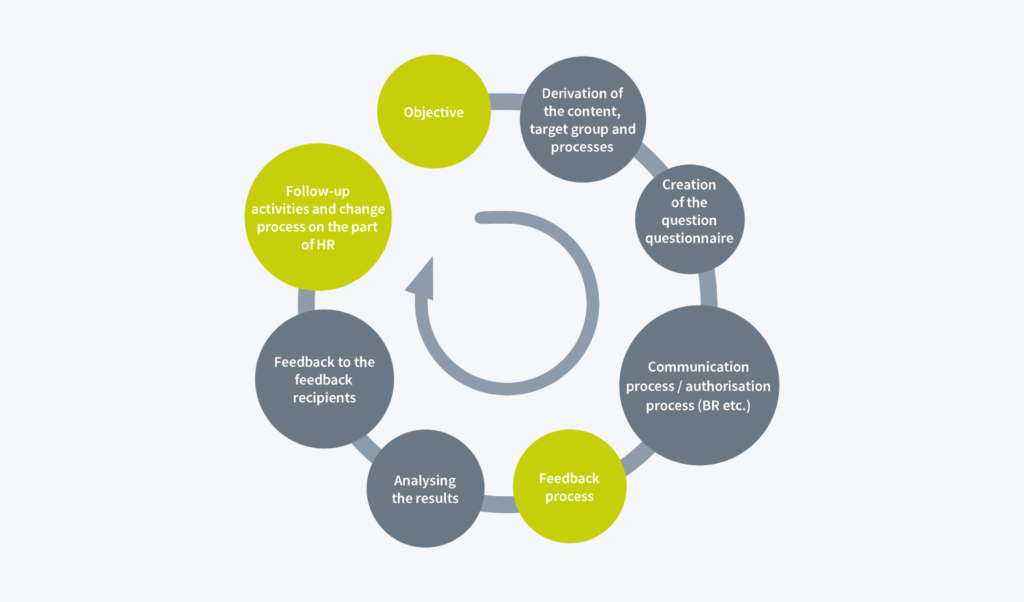
External assessment - self-assessment
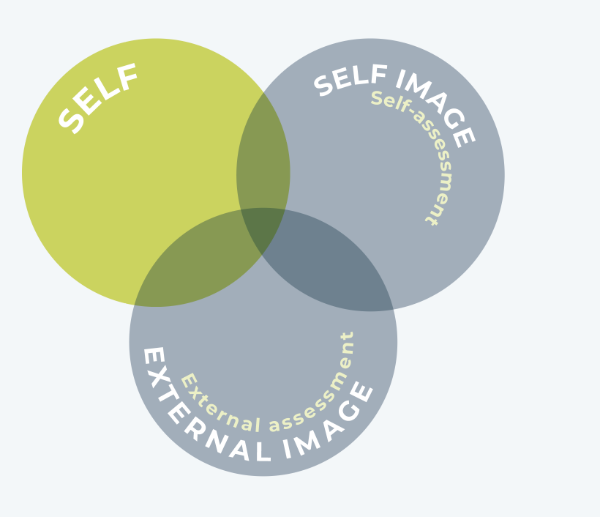
Feedback process
Creation of feedback processes via Circle2 online or import lists
Nomination of feedback providers by the respective recipient, alternatively: central nomination by Circle2
Participation in the survey process via one access (“single sign-on”)
Live insight into the response rate of the feedback processes
Provision of individual results reports directly after the survey
Automatic sending of emails with variable invitation and reminder options
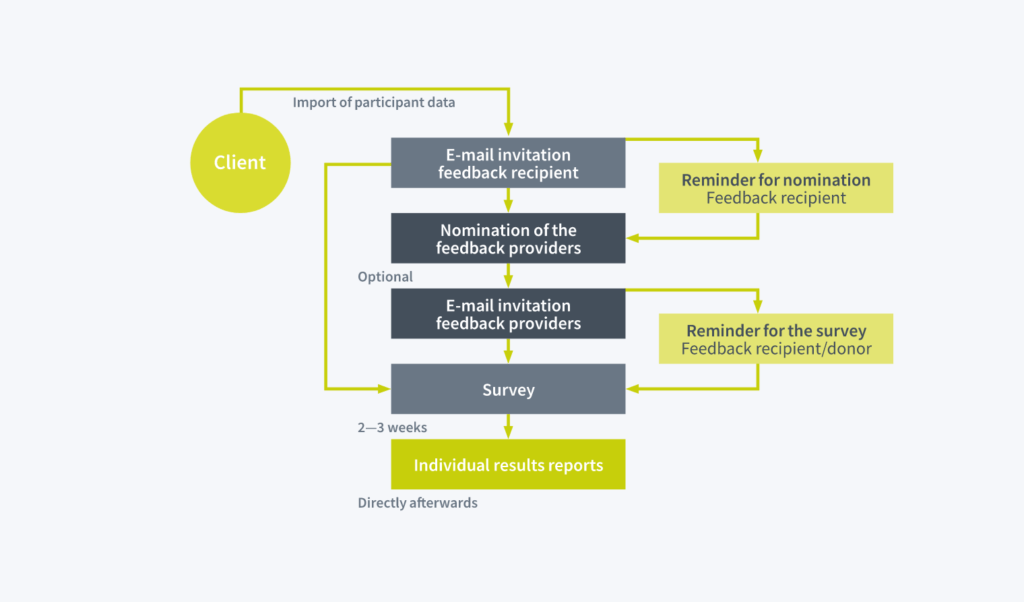
Quality of the assessment
The participants (takers and givers) give their assessment using a behavior-oriented online assessment form. The assessors are asked to assess the behavior of the target person observed (over a longer period of time). We work with a bipolar target and a slider assessment. These two elements reflect the current state of knowledge in scientific research and enable the 360° feedback to be highly accurate and economical, as the procedure only requires a few items.
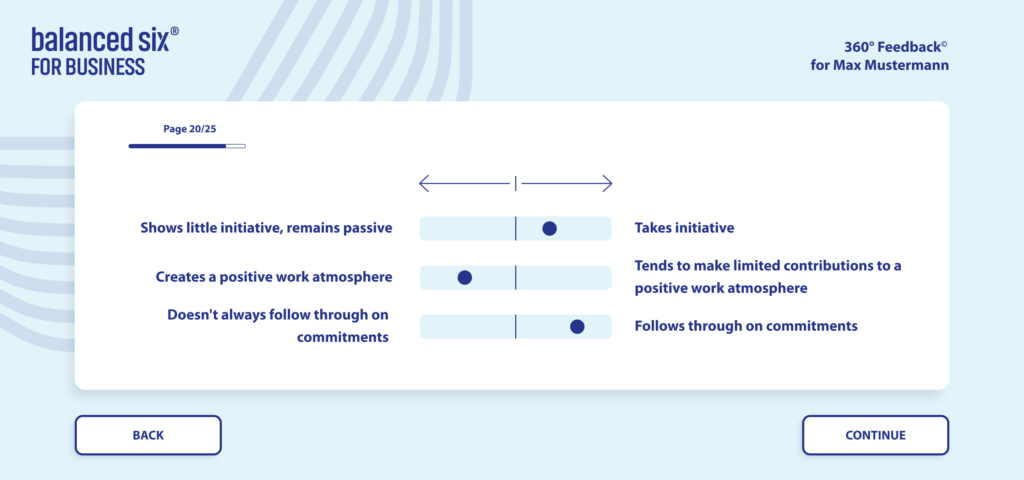
In addition to the quantitative assessment, there is the option of leaving general feedback („What else I would like to say:
(“What else I would like to say:” “The outstanding strengths are:” “The most urgent development issues are:”) or to give reasons for this or a similar question (“Do you think the person you have assessed has the skills to be successful as a leader/manager in your company?”). The extensive qualitative information helps to interpret and “understand” the results of the quantitative part.
Both parts together, the qualitative and the quantitative survey, ensure a comprehensive, differentiated and coherent overall result.
Presentation of results
Overview per competence field
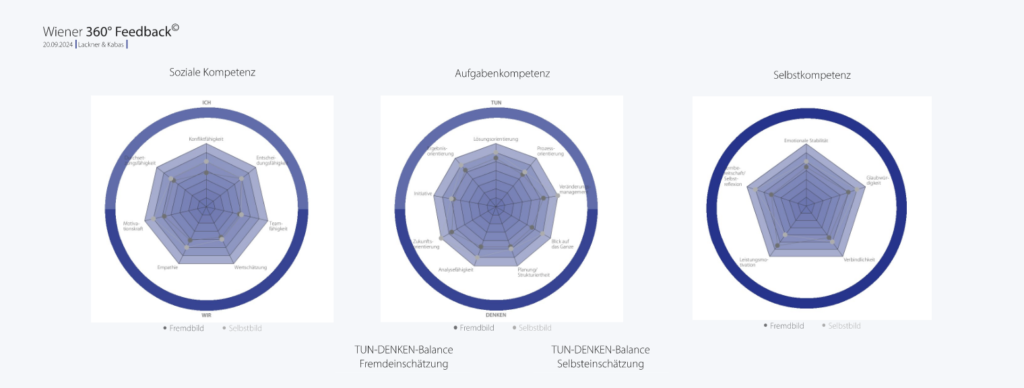
Individual competencies

Rankings
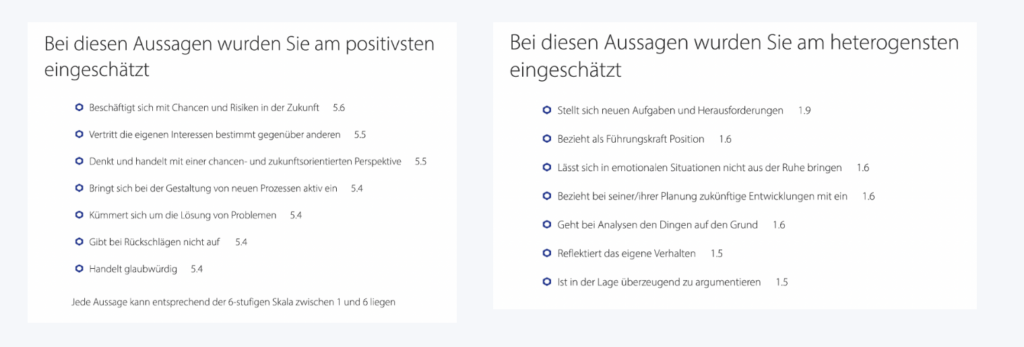
Homogeneity/heterogeneity of the assessments (standard deviation)
The overall external image/self-assessment is displayed as a triangle
V M KO KU stand for superiors, employees, colleagues, customers
Detailed description of the results
Example
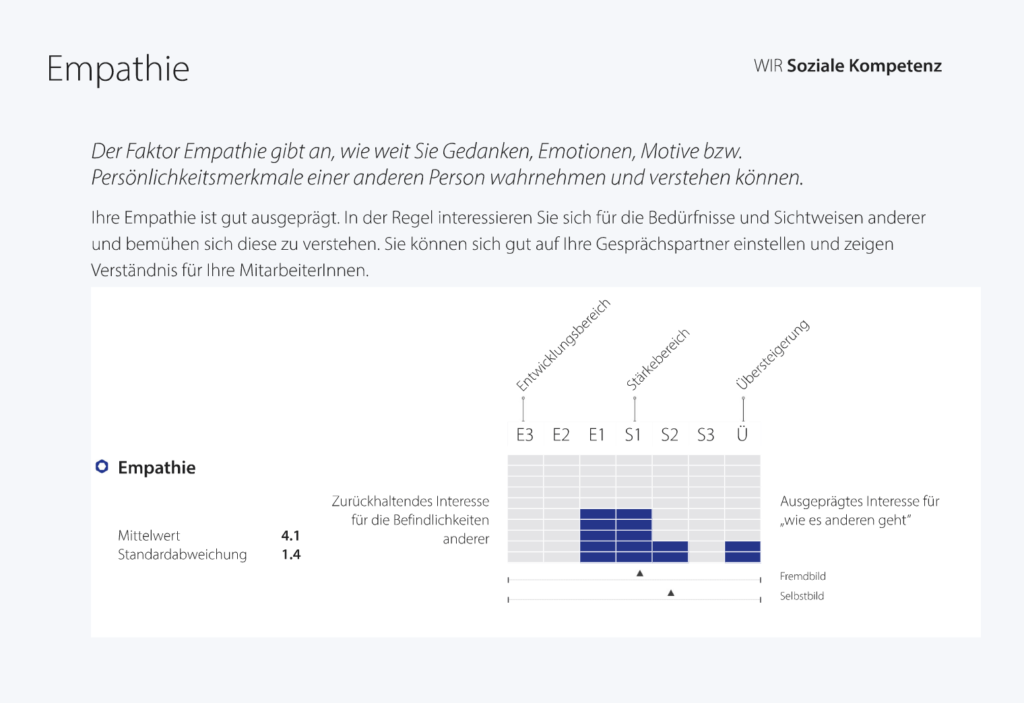
Option standard comparison
Depending on the purpose of the survey, standardization can be used.
Standardisation with external reference group
We have relevant data sets that we are happy to use for you. However, selecting a suitable reference population is complex (characteristics such as industry, hierarchical position, company size, average team size, etc. must be taken into account and matched to the characteristics of your own organisation).
Benefits
Ability to measure your own feedback recipients / your own company against an industry benchmark Direct implications for own competitive strategy can be derived ‚Broad‘ comparison population
Disadvantages
Complex Unrealistic under specific conditions
Standardisation with internal reference group
It maps the results of one person against the results of all the people who participated. This creates a sort of internal „ranking.“ We are happy to set up the necessary technology for them.
Benefits
Easy identification of “high” and “low” performers within the organization Ability to compare teams/groups within the same organisation.
Disadvantages
Influencing factors that do not depend on the assessed person can be difficult to take into account (external requirements, different jobs, complexities, leadership spans, etc.) No comparison with other organisations / the “general public” Creating competition and conflict within the organisation through “ranking”
No standardisation
The „classic“: 360° usually focuses on the perception of a person by different groups of evaluators. Here’s the difference with psychometric tests (cf. Potential analysis link)
Benefits
Aligns the development to the effect
Disadvantages
No comparison with others possible